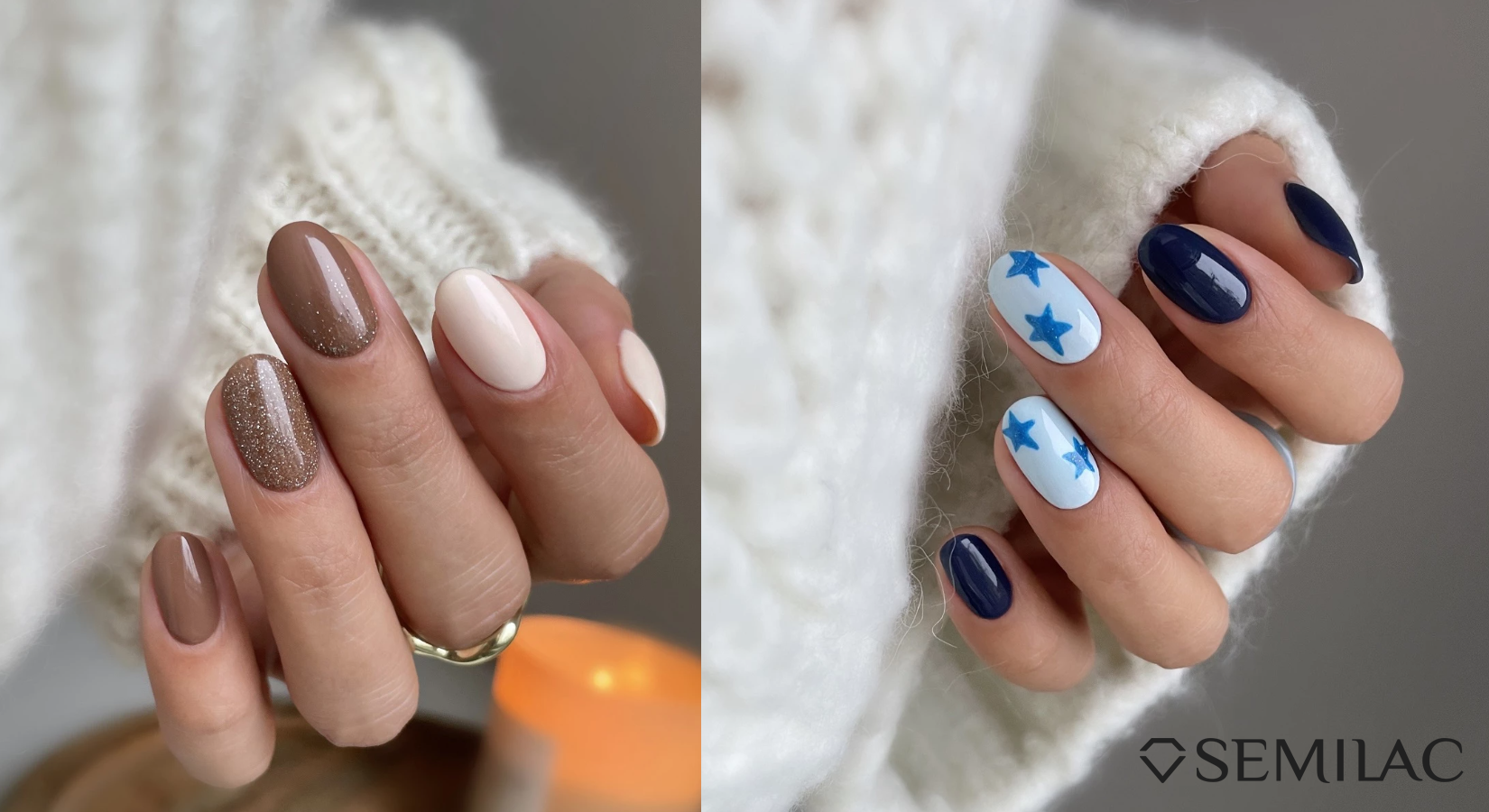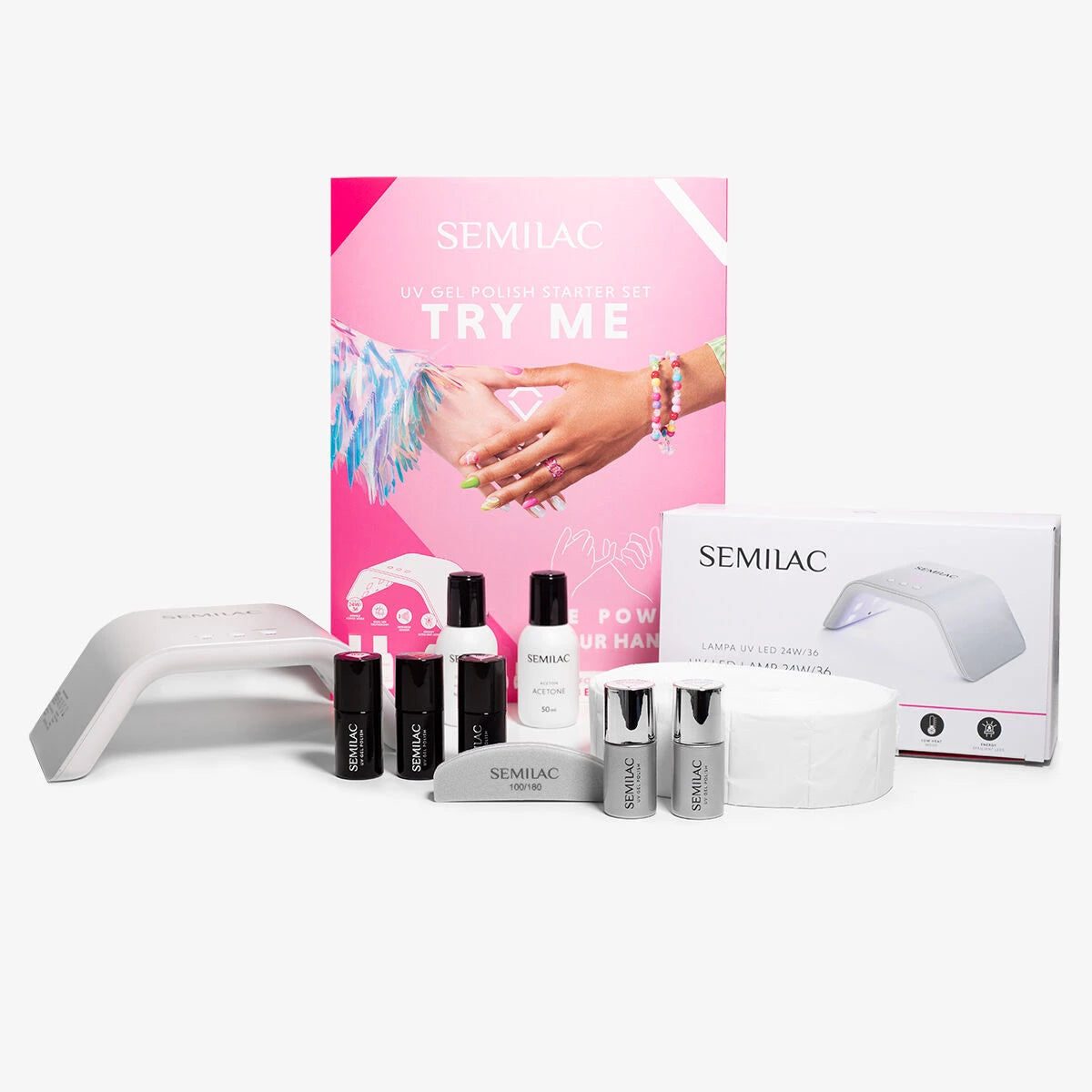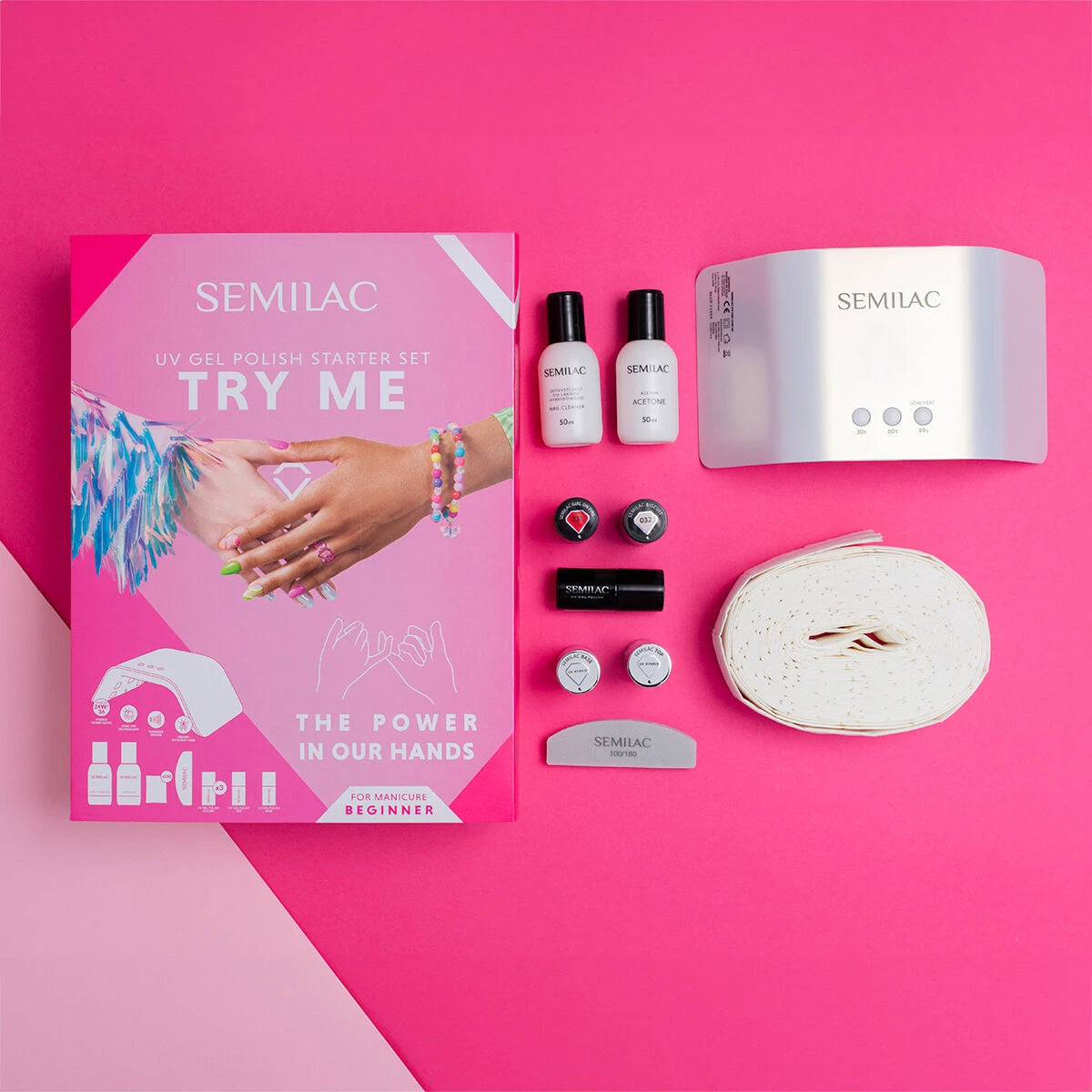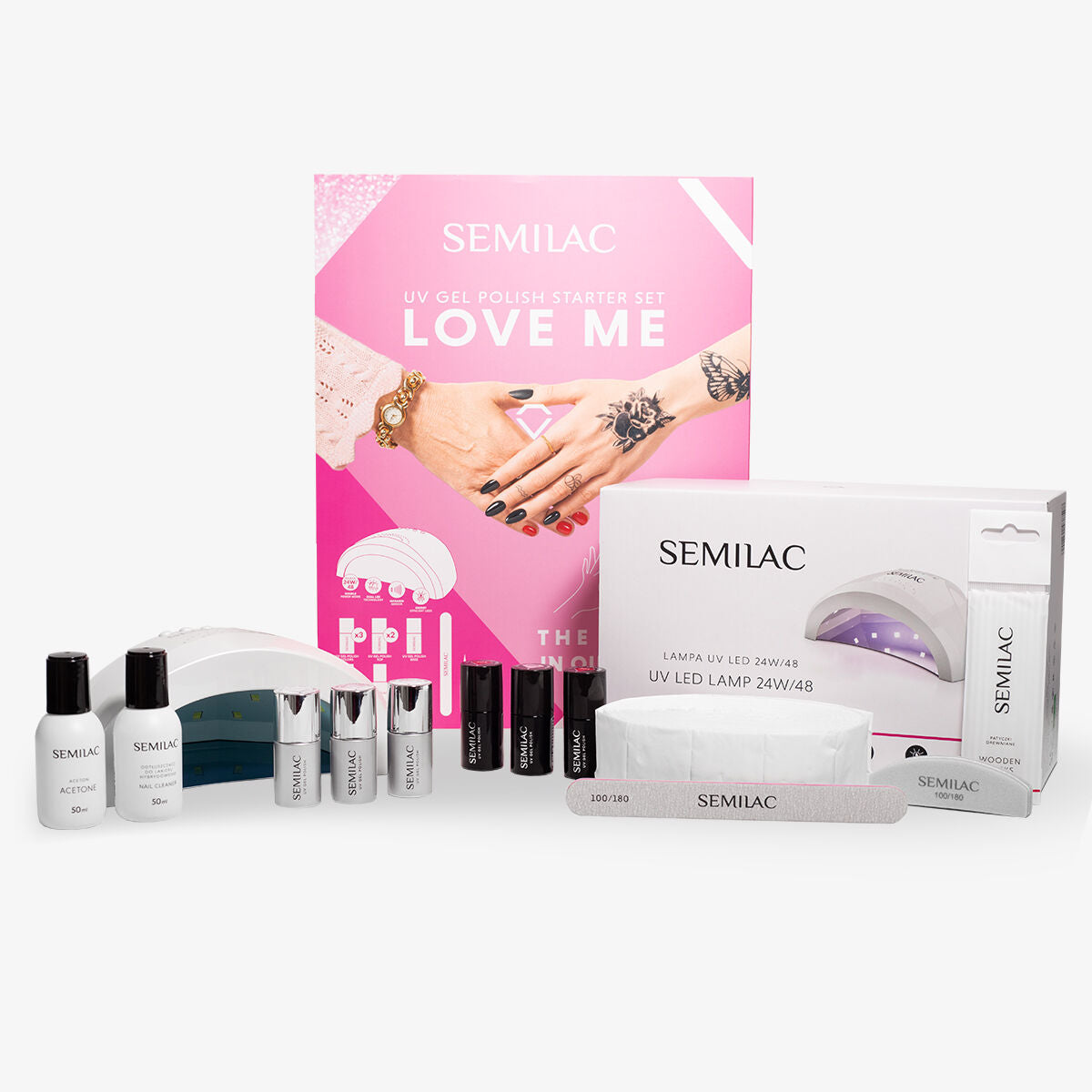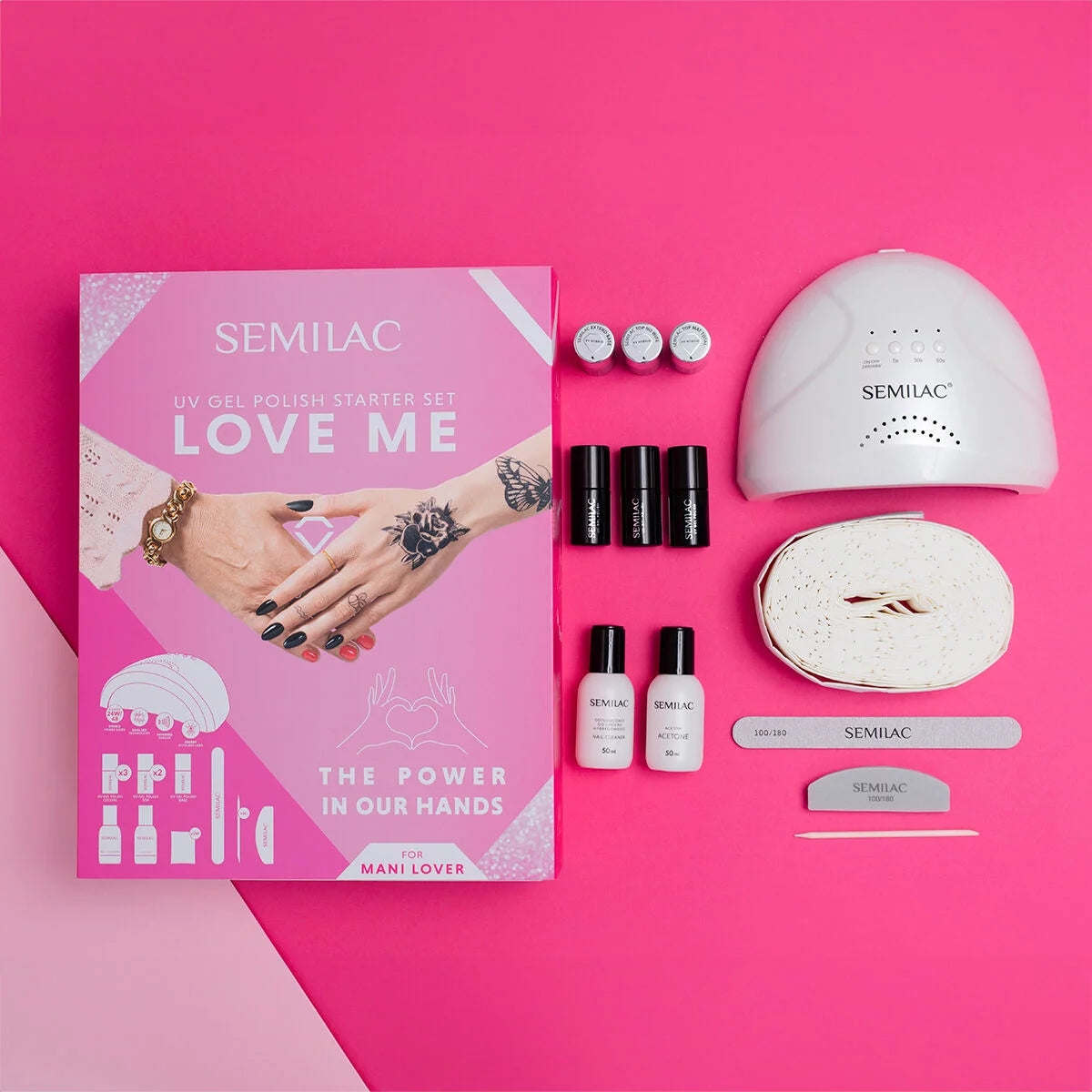Most common causes of nail polish chipping
Once again, you've dedicated time to create a flawless UV gel manicure, and even though you've crafted a beautiful design, you weren't able to enjoy it for long because the UV gel polish started chipping? You might be doubting your skills and considering giving up on DIY manicures. Don't do that! Find out why UV gel polish chips and solve this persistent problem once and for all!
Improperly prepared nail plate
A properly prepared nail plate is the foundation of every manicure, whether you're using regular polish, UV gel polish, gel, or acrylic gel. This step largely determines the final result, including the durability of the stylization. Inaccurate buffing of the nail, insufficient degreasing with a cleaner (or skipping this step), and neglecting the application of primer when necessary are the most common mistakes in preparing the nail plate for a manicure.
How to prepare the nail plate?
First, work on the cuticles. Apply a cuticle softening product, wait a few minutes, gently push back the cuticles with a stick or pusher, and if necessary, trim them with cuticle nippers. Now, focus on the nail plate – use a special buffer with a 180 grit to buff the nail. Perform the procedure carefully to buff every part of the nail plate, but gently enough not to damage it. Then, apply a cleaner to degrease the nail plate and remove any impurities. If necessary, apply a primer.
What is a primer, and when to use it?
A primer is a highly degreasing product applied to the natural nail plate (not the cuticles!) in case of adhesion issues with the base. Importantly, the nail plate must not be damaged in any way. The primer does not cure under UV/LED light, as it dries spontaneously shortly after application. You have two options:
Acid primer has a stronger effect and is recommended for significant adhesion problems, while its milder, acid-free counterpart is suitable for moderate issues.
Note! Remember that the product may freeze at temperatures below 10°C. If you order it in winter, do not open the bottle immediately after unpacking the package. Leave it at room temperature for at least 1 hour until it reaches a liquid consistency. Changes in the state of aggregation do not affect its properties.
Base mismatched to the nail plate
Incorrectly chosen products are another common cause of UV gel manicure chipping. If you apply a too rigid base on a very soft nail plate, it will likely detach from the free edge of the nail. A rigid product will not adapt to the natural, flexible nail plate's movements. In such a situation, try using "special task" bases:
- Semilac BB Base Nude – a rubber base for UV gel polishes in a universal nude shade that perfectly hides discolorations and other imperfections on the nail plate. The innovative formula ensures that it does not trap air near the cuticles, making it easy to apply and highly efficient. With BB Base, you can not only shape, level, and strengthen the nail plate but also build it up and gently extend it if necessary.
- Semilac BB Base Rose – a rubber base for UV gel polishes in a light, dirty rose shade, which is currently highly fashionable, possesses all the above-mentioned properties. Therefore, you can use it as a real base for further manicure creation or as a standalone product.


Working on air bubbles
Air bubbles are a real nuisance for stylists and manicure enthusiasts. Even the smallest one threatens the stylization's durability. If they have already formed, there is a high probability that they will enlarge, causing the UV gel polish to detach from the free edge and/or cuticle area. So, before you start filling in the gaps, carefully inspect each nail. If you notice any air bubbles, remove them thoroughly.
Why do air bubbles form?
Now that you know you need to eliminate them before starting a new stylization, why do they form in the first place? How to minimize the risk of their occurrence in the future, saving yourself a lot of additional work, time, and materials? Here are the most common causes of air bubbles:
- Inaccurate buffing of the nail plate and leaving the epidermis that covers the nail plate – any unevenness favors the formation of air bubbles.
- Flooding the cuticles with the base/polish – if you tend to flood the cuticles with the product, apply it in a way that leaves a slight gap between it and the cuticles.
- Incorrect choice of primer or skipping its use – this issue has been discussed in detail above.
- Leaving air bubbles from the previous stylization.
- Applying too thick layers of products – you should know that this procedure does not enhance the manicure's durability; on the contrary, it can worsen the situation and lead to quick manicure destruction.
- Using low-quality products, expired products, or storing them incorrectly.
Air bubbles – not just a cosmetic problem
Did you know that air bubbles, on which a new layer of the product is applied, provide an excellent space for the development of pathogenic microorganisms, such as the Pseudomonas aeruginosa bacterium? It can be recognized by the characteristic green colour of the nail plate. Properly performing a manicure eliminates the risk of disease development.
Curling of the dehydrated free edge
This is a relatively common ailment faced by those with improperly done manicures, leading to the dehydration of both the skin and the nail plate. How to prevent this? The key is regular moisturizing of the cuticles and the nail plate – including from the bottom – using a good cuticle oil. If you notice this problem, ensure intensive moisturizing and consider changing the shape of the nail plate to a rounded one, as the square shape exacerbates the issue of the free edge curling.
Overfiling of the nail plate
Overfiling the nail plate is extremely unpleasant. If you apply a product to damaged nails and cure it in a UV/LED light, you should be prepared for strong pain! It's not worth it because the product's adhesion on a damaged plate is very weak – the UV gel polish will quickly start cracking and chipping. What to do in such a situation? Postpone the stylization until the nail plate is completely healed. Trim it short and support the reconstruction using regenerating oils.
Applying too much product on the free edge
You have probably wondered many times why the UV gel polish is chipping at the ends. Applying too thick a layer of the product is one of the most common reasons. As mentioned above, more does not always mean better; in fact, it can worsen the situation and lead to quick manicure destruction. Moreover, a thick nail plate, especially at the free edge, does not look attractive at all! So, if you accidentally apply too much material during stylization, do not cure it; instead, remove the excess with a brush.
Insufficient curing time of products in the lamp
Do you not know how long to cure a particular product in the lamp? Make sure to find out, as the curing time may vary depending on the type of product (base, UV gel, UV gel polish) and the lamp's power. Even if the stylization seems ready at first glance, it will start delaminating or/and chipping if the product is only superficially cured.
Summary
As you can see, there are many reasons why UV gel polish chips. Fortunately, most of them are easy to eliminate by following the above tips. One more piece of advice – don't rush. Decide to do a manicure when you genuinely have time and don't nervously watch the clock in fear of not making it to the next important meeting!

